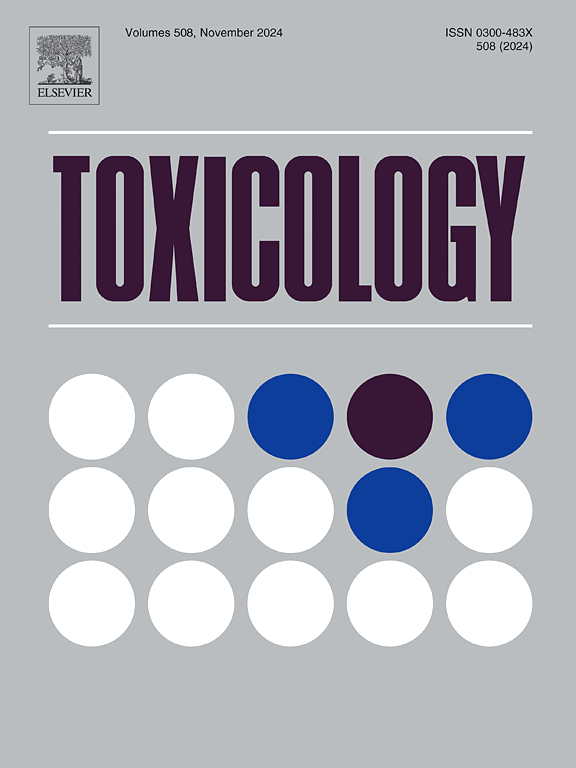The synthetic cannabinoids ADB-FUBINACA and AMB-FUBINACA enhance in vitro neurodifferentiation of NG108-15 cells, along with PGC-1α dysregulation and mitochondrial dysfunction
IF 4.6
3区 医学
Q1 PHARMACOLOGY & PHARMACY
引用次数: 0
Abstract
There is growing concern regarding the use of Synthetic Cannabinoids (SCs) by young adults (including pregnant and breastfeeding women, and women of childbearing age), due to their potential to cause neurodevelopmental disorders. Here, we first-hand assessed the in vitro impact of two indazole-derived SCs, ADB-FUBINACA and AMB-FUBINACA, on the neurodifferentiation of NG108–15 cells, especially focusing on their modulation of mitochondrial function during such process. Both SCs tested enhanced neurite outgrowth in NG108–15 cells at biologically-relevant concentrations (< 1 μM), a process that was blocked by SR141716A and hemopressin (antagonists of cell membrane and intracelular CB1 receptors, respectively). Moreover, this effect was accompanied by a CB1 receptor-independent reduction in mitochondrial membrane potential. Interestingly, ADB-FUBINACA, but not AMB-FUBINACA, decreased intracellular ATP levels through CB1 activation. Notably, voltage-dependent anion channel (VDAC) expression, an indirect marker of mitochondrial mass, remained unchanged during exposure to both SCs. ADB-FUBINACA increased the expression of the key energy regulator PGC-1α in the cytosol (1pM-1µM), while decreasing it in the mitochondrial fraction (1 nM and 1 µM), without affecting its nuclear translocation, supporting its role in mitochondrial turnover. Other mitogenesis markers, like NFR-1 and TFAM, remain unchanged. Additionaly, the Parkin-PINK1 mitophagy pathway was not activated at the concentrations tested. Our findings demonstrate that ADB-FUBINACA and AMB-FUBINACA enhance neuronal differentiation of NG108–15 cells via CB1 receptor activation, while concomitantly promoting mitochondrial dysfunction. Although further research is required to fully elucidate the mechanisms underlying these observations, our data already suggests that these SCs may impact proper neurodevelopment.
合成大麻素ADB-FUBINACA和AMB-FUBINACA增强NG108-15细胞的体外神经分化,并伴有PGC-1α失调和线粒体功能障碍
年轻人(包括孕妇和哺乳期妇女以及育龄妇女)使用合成大麻素(SCs)的问题日益受到关注,因为它们有可能导致神经发育障碍。在这里,我们第一手评估了两种吲唑衍生的SCs, ADB-FUBINACA和AMB-FUBINACA对NG108-15细胞神经分化的体外影响,特别是在此过程中它们对线粒体功能的调节。在生物学相关浓度下,两种SCs均能增强NG108-15细胞的神经突生长(<;1 μM),这一过程被SR141716A和加压素(分别是细胞膜和细胞内CB1受体的拮抗剂)阻断。此外,这种影响还伴随着CB1受体不依赖的线粒体膜电位降低。有趣的是,ADB-FUBINACA,而不是AMB-FUBINACA,通过CB1激活降低细胞内ATP水平。值得注意的是,电压依赖性阴离子通道(VDAC)的表达,线粒体质量的间接标志,在暴露于两种sc时保持不变。ADB-FUBINACA增加了细胞质(1pM-1µM)中关键能量调节因子PGC-1α的表达,而降低了线粒体部分(1 nM和1 µM)的表达,但不影响其核转运,支持其在线粒体周转中的作用。其他有丝分裂标志物,如NFR-1和TFAM,保持不变。此外,在测试的浓度下,帕金森- pink1有丝分裂途径未被激活。我们的研究结果表明,ADB-FUBINACA和AMB-FUBINACA通过CB1受体激活促进NG108-15细胞的神经元分化,同时促进线粒体功能障碍。虽然需要进一步的研究来充分阐明这些观察结果背后的机制,但我们的数据已经表明,这些SCs可能会影响正常的神经发育。
本文章由计算机程序翻译,如有差异,请以英文原文为准。
求助全文
约1分钟内获得全文
求助全文
来源期刊

Toxicology
医学-毒理学
CiteScore
7.80
自引率
4.40%
发文量
222
审稿时长
23 days
期刊介绍:
Toxicology is an international, peer-reviewed journal that publishes only the highest quality original scientific research and critical reviews describing hypothesis-based investigations into mechanisms of toxicity associated with exposures to xenobiotic chemicals, particularly as it relates to human health. In this respect "mechanisms" is defined on both the macro (e.g. physiological, biological, kinetic, species, sex, etc.) and molecular (genomic, transcriptomic, metabolic, etc.) scale. Emphasis is placed on findings that identify novel hazards and that can be extrapolated to exposures and mechanisms that are relevant to estimating human risk. Toxicology also publishes brief communications, personal commentaries and opinion articles, as well as concise expert reviews on contemporary topics. All research and review articles published in Toxicology are subject to rigorous peer review. Authors are asked to contact the Editor-in-Chief prior to submitting review articles or commentaries for consideration for publication in Toxicology.
 求助内容:
求助内容: 应助结果提醒方式:
应助结果提醒方式:


